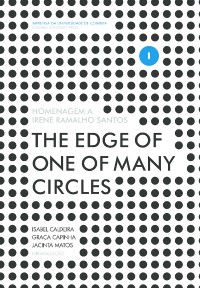Please use this identifier to cite or link to this item:
https://hdl.handle.net/10316.2/42310| Title: | How to imagine community without property | Authors: | Armstrong, Nancy Tennenhouse, Leonard |
Keywords: | Novels;Network;Property;Early American;Imagined community;romance;rede;propriedade;primeiras décadas da América;comunidade imaginada | Issue Date: | 2017 | Publisher: | Imprensa da Universidade de Coimbra | Journal: | http://hdl.handle.net/10316.2/42307 | Abstract: | We assume that early American novelists felt that the international circulation of persons and property was eroding the fantasy of self-enclosure that a world made of property promised to guarantee. This is what one may gather from the sheer percentage of these novels that systematically reversed the logic of property shared by Kant, Malthus, and any number of European intellectuals of the same period. By so dismantling the fantasy of property, the novels of the early republic make it only too clear they were changing the novel form to try out an alternative basis for social relationships. What were they after? What common sense of purpose prompted them to fashion novels that so dispersed persons and their property as to challenge Europe’s fantasy of America as a wasteland awaiting appropriation? Judging by its proliferation in the United States during the period from 1789 through the 1820s, the network novel addressed a felt need on the part of a diverse and scattered readership to imagine such an alternative. Este artigo baseia-se no pressuposto de que os primeiros romancistas americanos sentiam que a circulação internacional de pessoas e bens estava a corroer a fantasia de um isolamento que um mundo apoiado na propriedade parecera garantir. É possível retirar esta conclusão a partir da grande percentagem de romances que sistematicamente revertem a lógica da propriedade segundo Kant, Malthus e outros intelectuais europeus do mesmo período. Ao desmantelar a fantasia da propriedade, os romances dos primeiros tempos da República estão claramente a mudar a forma do romance para testar uma base alternativa das relações sociais. O que procuravam? Que objetivo comum os incitava a criar romances que dispersavam pessoas e bens, assim desafiando a fantasia que a Europa tinha da América como uma terra virgem disponível para ser apropriada? Se tivermos em conta a sua proliferação nos E.U.A. durante o período de 1789-1820, estes romances, pelas redes que constroem, parecem corresponder à necessidade dessa alternativa por parte de um público amplo e ele próprio disperso. |
URI: | https://hdl.handle.net/10316.2/42310 | ISBN: | 978-989-26-1307-9 978-989-26-1308-6 (PDF) |
DOI: | 10.14195/978-989-26-1308-6_2 | Rights: | open access |
| Appears in Collections: | The Edge of one of many circles: homenagem a Irene Ramalho Santos |
Files in This Item:
| File | Description | Size | Format | |
|---|---|---|---|---|
| how_to_imagine_community.pdf | 203.71 kB | Adobe PDF |  |
Items in DSpace are protected by copyright, with all rights reserved, unless otherwise indicated.
